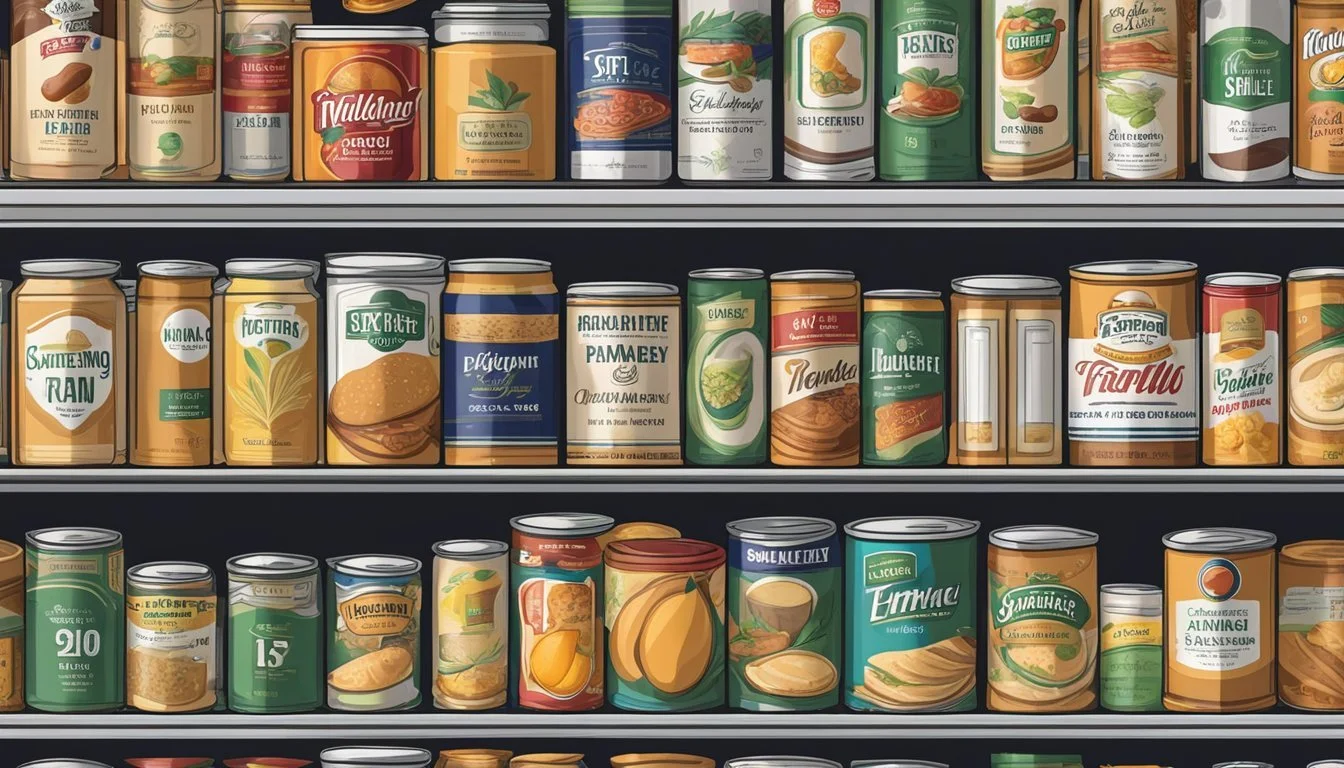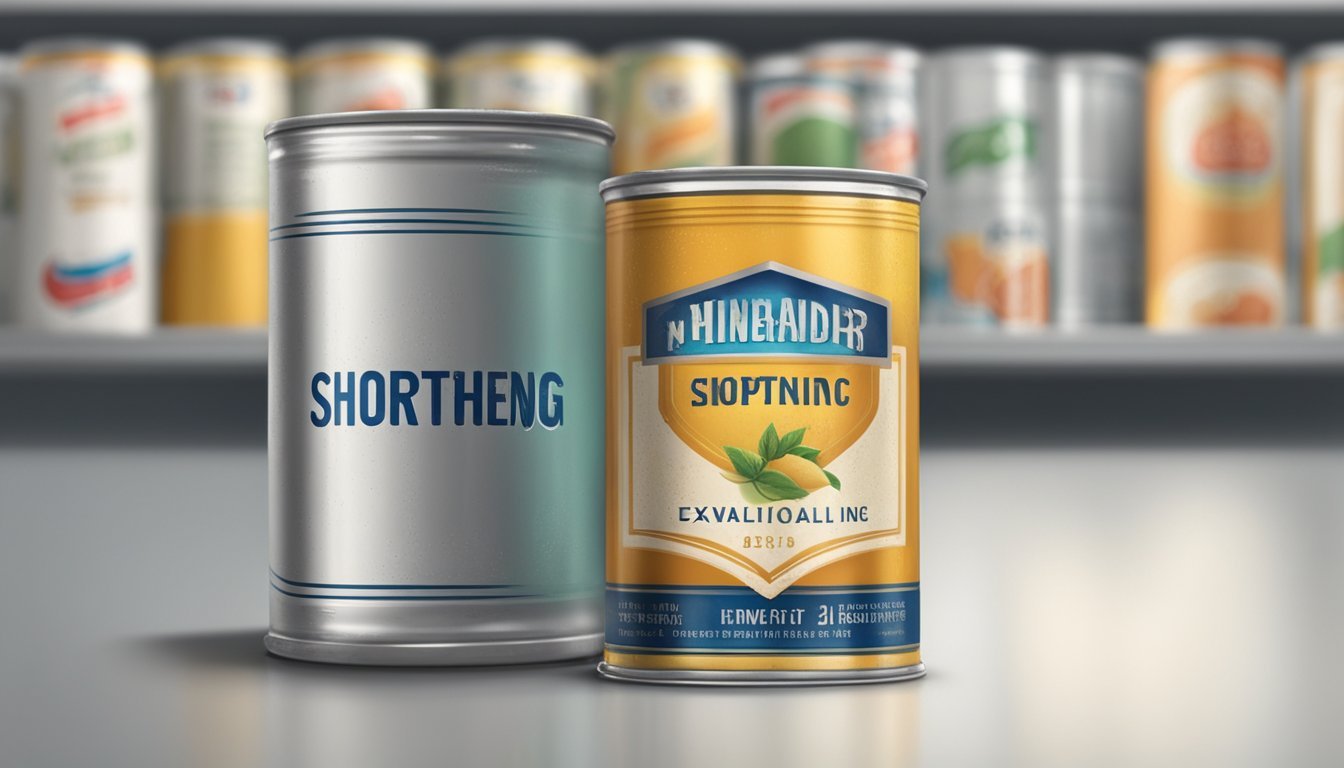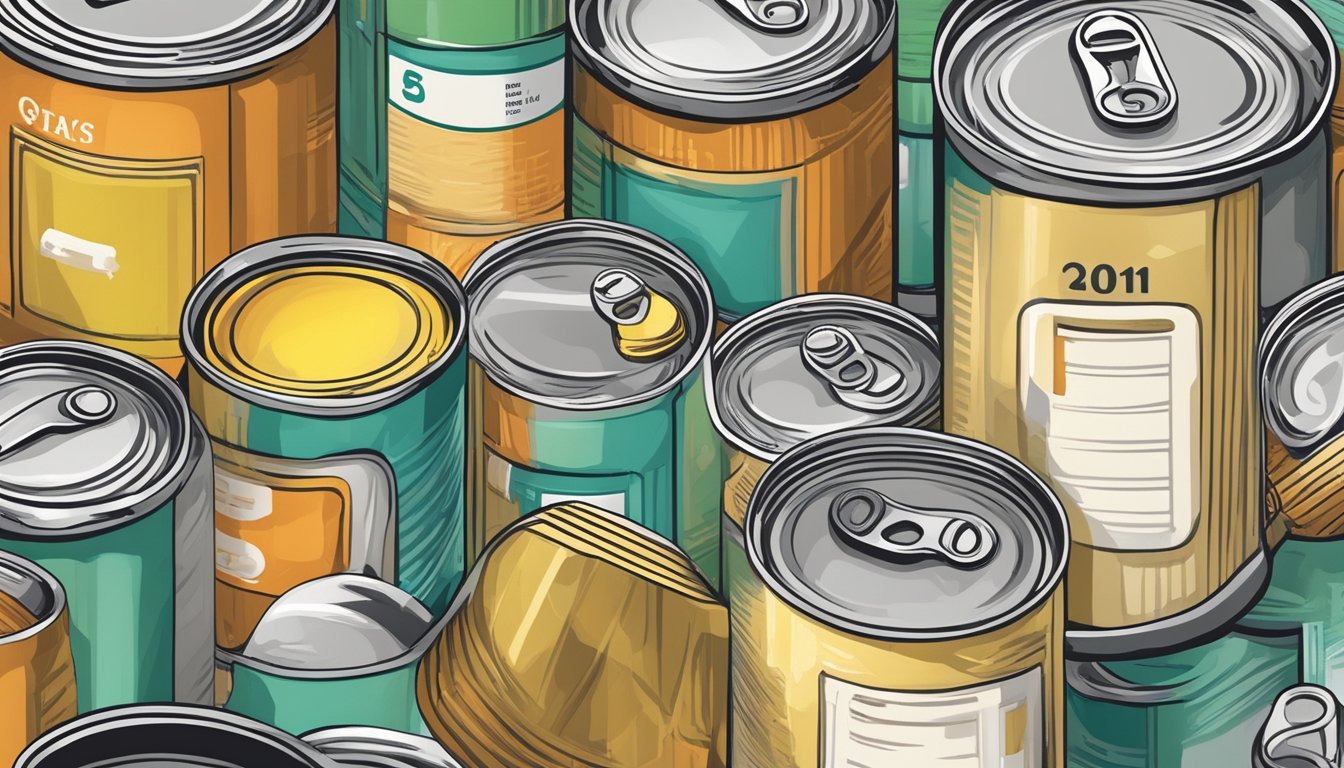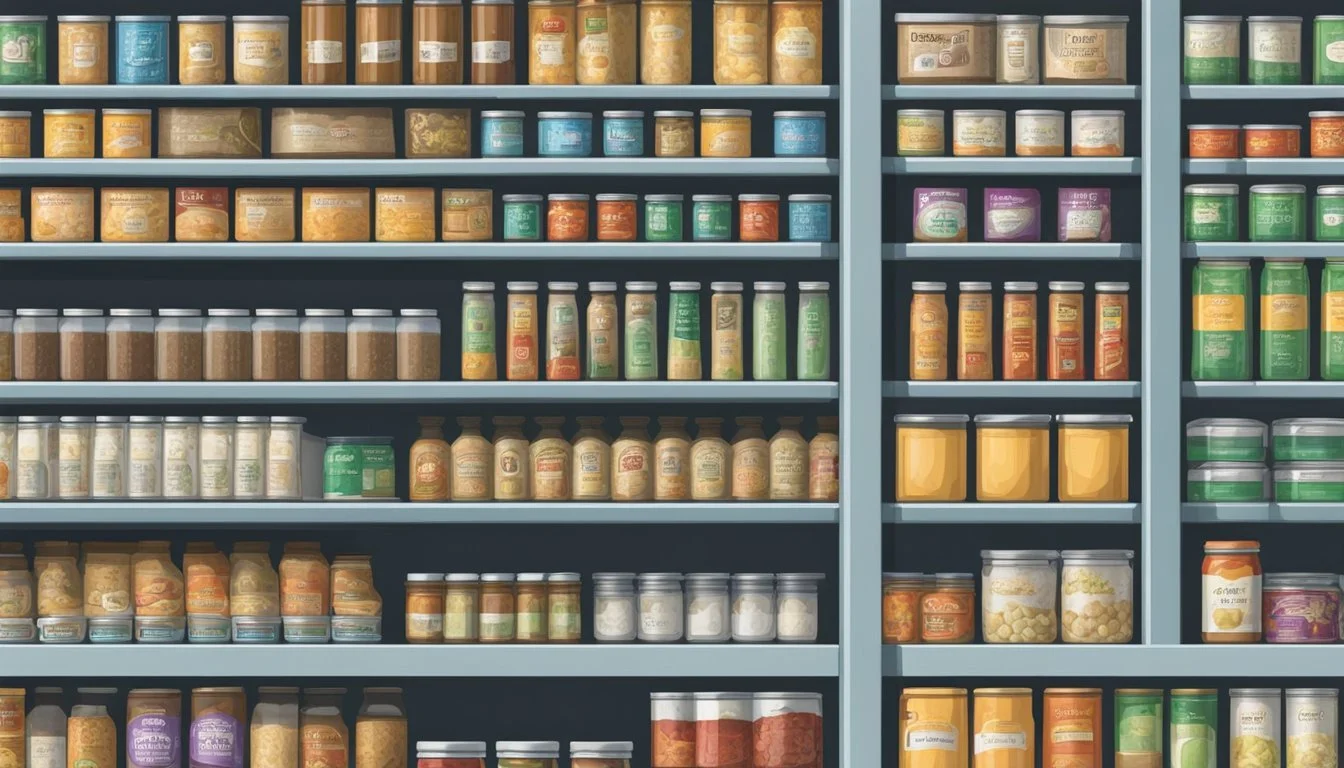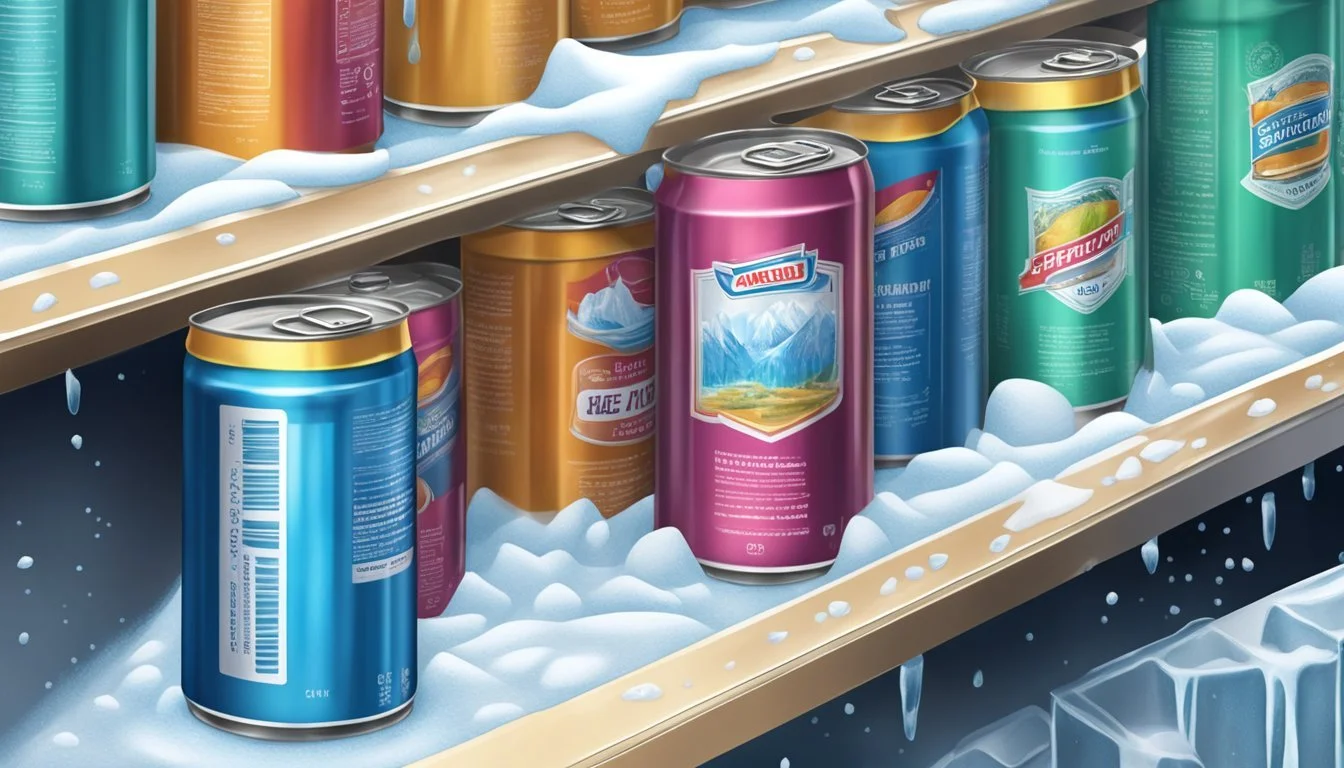How Long Does Canned Shortening Last?
Shelf Life and Storage Tips
Understanding the shelf life of canned shortening is essential for both culinary professionals and home cooks. Shelf life refers to the length of time food products maintain their quality and safety before consumption. Solid shortening, a popular fat used for baking and frying, often sparks curiosity regarding its storage duration, as it is both shelf-stable and a regular staple in many pantries.
Solid shortenings, such as those made from hydrogenated vegetable oil, have a reputation for an extended shelf life due to their high stability at room temperature. The longevity of unopened solid shortening is quite impressive; it can remain at peak quality for up to two years when stored properly in a cool, dry place. Once the seal is broken, however, the clock starts ticking, with a room temperature shelf life of approximately three months for best quality.
Understanding Shortening
Shortening is an essential fat used in baking and cooking, known for its ability to give foods a delicate, crumbly texture. Here, the focus will be on its types, composition, characteristics, and how it compares to other fats like butter, lard, and margarine.
Types of Shortening
Vegetable Shortening: Made from hydrogenated vegetable oils, such as soybean and cottonseed, vegetable shortening is solid at room temperature and widely used for its neutral flavor.
Lard: A traditional form of shortening, lard is derived from animal fat, specifically pork, and imparts a rich flavor to dishes.
Specialty Shortenings: Developed for specific purposes like icing or deep-frying; these may have additives to enhance their function.
Composition and Characteristics
Shortening consists mainly of fats. It typically contains hydrogenated vegetable oil, making it solid at room temperature and stable for long-term storage. Its high fat content, with a low proportion of water, contributes to its long shelf life and ability to create flaky layers in pastry.
Key Characteristics:
Solid at Room Temperature: Ensures structural integrity in baked goods.
High Melting Point: Provides a desirable texture and aids in producing tender products.
Lack of Water: Reduces gluten formation in doughs, leading to a more tender crumb.
Shortening vs. Butter, Lard, and Margarine
Fat Type Source Flavor Melting Point Water Content Suitability in Baking Shortening Hydrogenated vegetable oil Neutral High Low Excellent for flaky pastries Butter Dairy Rich & creamy Lower Moderate Adds flavor, used for richness Lard Animal fat (pork) Distinctive Variable Low Traditional for flakiness & taste Margarine Vegetable oil (may include milk) Mild flavor (varies) Lower Moderate Substitute for butter, varied uses
Shortening does not impart a strong flavor, unlike butter and lard, which can enhance the taste of baked products. Margarine, while similar in composition to shortening, often contains more water and a different flavor profile. Choosing between these fats will depend on the desired texture and flavor in the final product.
Decoding Expiration Labels
When examining canned shortening, it’s pivotal to understand the terminology used for expiration labels and to follow manufacturers' specific storage guidelines to determine the product's quality and safety.
Understanding Expiration Date
The term expiration date or best by label on canned shortening is not a hard-and-fast rule for safety but rather the manufacturer's estimate for when the product is at its peak quality. This date indicates to the consumer when one can expect the ideal flavor, texture, and overall quality. It’s important to note that if stored properly, canned shortening can remain safe to use beyond this date without significant quality loss.
Manufacturers' Guidelines
Manufacturers provide guidelines that offer a window for how long their products maintain best quality. For canned shortening, it's recommended to store unopened containers at room temperature. Following these tips, unopened shortening typically retains best quality for:
Room Temperature (Unopened): Up to 2 years
After Opening (Room Temperature): Roughly 3 months
It's essential to heed these suggestions as they are based on the product's composition and packaging, which can influence shelf life. Signs of spoilage such as off-smells, taste, or mold indicate the product should not be consumed irrespective of the dates.
Proper Storage Methods
The longevity of canned shortening hinges on the storage conditions. Ensuring a cool, dry, and stable environment maximizes shelf life and preserves quality.
Unopened Shortening Storage
Location: One should store unopened shortening in a cool, dry place such as a pantry, away from any heat sources. Optimal storage temperatures range between 50-70°F (10-21°C).
Container: It is crucial that the shortening remains in its original, sealed container to prevent exposure to air and contaminants.
Opened Shortening Storage
Airtight Containers: Once opened, transfer the shortening into an airtight container if it is not already in one to maintain freshness and prevent rancidity.
Temperature and Location: Store the airtight container in a cool, dry location away from light and heat. Avoid placing opened shortening near the stove, oven, or a window where sunlight can rapidly degrade its quality.
Determining Shortening Quality
When assessing the quality of canned shortening, one should pay attention to its smell, color, and texture, as these characteristics can indicate its current state of freshness and whether it is still suitable for consumption.
Sensory Indicators of Quality
The first step in determining the quality of shortening is through sensory evaluation. Fresh shortening typically has a neutral or almost nonexistent smell. Any off odor or rancid smell strongly suggests that the shortening has spoiled and should not be used. Similarly, shortening should have a neutral taste; any deviation may indicate spoilage.
Visual and Texture Assessments
Appearance plays a pivotal role in assessing shortening quality. Shortening should have a uniform color, typically a white to creamy hue. Any color change can indicate spoilage, especially if it has yellowed or developed darker spots. The texture should be consistent and smooth. Texture changes like graininess or a visible separation of oils suggest that the shortening is no longer in its optimal state.
Risks of Spoiled Shortening
Using spoiled shortening can negatively affect the flavor and texture of food, often imparting an undesirable taste or causing baked goods to fall flat. It is crucial to avoid consuming shortening that shows signs of spoilage, as it poses the risk of causing food to become unpleasant in taste, which can be indicative of potential spoilage and the presence of food-borne pathogens.
Shelf Life and Factors Affecting Longevity
Solid shortenings, such as those found in canned form, have specific longevity expectations depending on how they are stored. It's crucial to grasp both estimated shelf life ranges and the environmental factors that could alter a shortening's freshness and quality.
Estimated Shelf Life Ranges
The shelf life of unopened solid shortening typically spans up to 8 months when stored at room temperature. Once opened, its best quality is preserved if used within 3 months. These durations consider that the shortening is kept under ideal conditions without exposure to extreme variations in temperature and oxygen, which can hasten deterioration.
Environmental Influences
Storage Conditions significantly impact the longevity of shortening. Preservatives in the shortening can extend shelf life, but ideal conditions must be maintained. A consistent, cool (50-70°F or 10-21°C) and dry area away from direct light and heat sources help prolong freshness. Excessive heat or cold can trigger spoilage, while exposure to air and oxygen might accelerate rancidity. Storing the shortening properly can help maintain best quality and ensure a longer shelf life.
Handling and Preventing Spoilage
Proper handling and prevention strategies are crucial for maintaining the quality of canned shortening and minimizing health risks associated with spoilage. Ensuring that the integrity of canned shortening is preserved can prevent waste and prolong its shelf life.
Signs of Rancidity and Spoilage
Rancidity: Canned shortening becomes rancid due to oxidation, which leads to an off-flavor that is easily detectable by taste and smell.
Visual Spoilage: Spoiled shortening may exhibit visible mold or a change in color.
Texture Changes: A change in the consistency, such as becoming overly soft or hard, can indicate spoilage.
Health Risks: Consumption of rancid or spoiled fats like shortening can pose health risks. Although rancid fats are not typically associated with food poisoning, they can cause digestive discomfort and are not nutritious.
Preventive Measures
Storage Temperature: Store at a consistent temperature between 50°F and 70°F to maintain freshness.
Avoid Heat and Light: Keep the shortening away from direct sunlight and heat sources to prevent melting and rancidity.
Seal Integrity: Ensure that the shortening's container lid is tightly sealed to minimize exposure to air and moisture.
Freezing: To extend shelf life, place the shortening in a freezer bag and store it in the freezer.
Refrigeration: Refrigerating shortening is not mandatory, but it can help slow down oxidation.
Utensil Cleanliness: Use clean utensils to avoid contamination, which can accelerate spoilage.
Expiration: While some canned shortenings can last beyond their expiration date, it's important to inspect for signs of spoilage regularly.
By rigorously adhering to these preventive measures, the shelf life of canned shortening can be maximized, making it a reliable ingredient in various culinary applications for an extended period.
Maximizing Utility and Usage of Shortening
Storing shortening correctly and understanding its use in recipes are essential for making the most of this pantry staple. It serves as a key ingredient in creating tender and creamy textures in a variety of baked goods.
Usage in Cooking and Baking
Shortening is a versatile ingredient, most commonly used in baking and frying. In baking, it contributes to the tender texture of pastries, cakes, and breads. Its high melting point creates baked goods that are flaky and light, as it allows the dough to hold its shape longer during baking. When frying foods, shortening's stability at high temperatures makes it an ideal choice, yielding a crispy exterior without absorbing too much oil into the food.
Baking: Creates flaky layers in pastries, tender crumb in cakes and bread.
Frying: Provides a crispy texture to fried foods without excessive oil absorption.
Alternatives and Substitutes
While shortening is a traditional choice, there are substitutes that can be used depending on the recipe's demands and dietary concerns. For those looking for an organic alternative, organic shortening, which is made from palm oil, is available. Other fats like butter or margarine can be used to achieve a similar creamy texture, though they might impart a different flavor and can have varied reactions to heat.
Butter: Offers a richer flavor but can affect the texture and is not as stable at high heat.
Margarine: Sometimes used as a direct substitute, though it may contain water which can affect consistency.
By choosing the appropriate type of shortening or substitute, one can ensure the desired outcome in both flavor and texture of the dish while also adhering to dietary preferences or restrictions.
Freezing and Thawing Shortening
Freezing can significantly extend the shelf life of shortening, and proper thawing ensures it retains its quality. The process is straightforward provided the right techniques are used for freezing and thawing.
How to Freeze Shortening
Divide Shortening: To freeze shortening, first divide it into usable portions. This prevents the need for repeated thawing and freezing, which can degrade its quality.
Wrap Portions: Wrap each portion tightly in plastic wrap or aluminum foil to protect from air and moisture.
Seal in a Container: Place the wrapped portions in an airtight container or a freezer bag. Push out any excess air before sealing.
Label and Freeze: Label the container or bag with the current date. Shortening can be maintained in the freezer for up to 6 months for quality retention.
Thawing Procedures
Refrigeration: Transfer the required amount of shortening from the freezer to the refrigerator and let it thaw gradually. This can take several hours or be left overnight, depending on the portion size.
Room Temperature: If quicker thawing is needed, a portion can be left at room temperature on the counter. Ensure it's securely wrapped to avoid contamination and melting into a mess.
Shortening should only be thawed once, and any remainder should be used promptly to maintain its peak condition. Always inspect thawed shortening for any changes in texture or odor before use.
Troubleshooting Common Shortening Issues
Canned shortening can last a long time, but it is not impervious to issues such as discoloration, texture changes, and the development of off-flavors or odors. Recognizing and addressing these problems quickly can help ensure that the shortening remains safe to use and performs well in cooking and baking.
Discoloration and Texture Changes
If one notices a change in color, such as a deepening or yellowing of the shortening, this could be a sign of oxidation or the onset of rancidity. Texture changes, especially a gritty consistency, are indicative of deterioration. In both cases, consumers are advised to discard the shortening to prevent any negative impact on their recipes.
Off-Flavors and Odors
Shortening should have a neutral smell; an off odor, such as a rancid smell, signals spoilage. The rancid taste, also described as bitter or metallic, is a clear sign that the shortening has spoiled. These changes in flavor and smell are due to the breakdown of fats over time, especially when stored improperly.
Dealing With Pests
The presence of pests, such as insects, is a concern for any food storage, including shortening. Ensuring that the lid is tightly sealed after each use can help prevent pest intrusion. If pests are detected within the shortening container, it must be discarded immediately to avoid potential health risks. Proper storage, away from potential pest infestations, is crucial to extending the shelf life of canned shortening.
Conclusion
Canned shortening is a staple in many kitchens due to its versatility and long shelf life. When unopened and stored in the right conditions—cool, dry, and dark—it can last comfortably for up to two years past the printed expiration date.
Once opened, the quality and shelf life can decrease more rapidly. The standard guidance for opened canned shortening is to use it within three months for optimal freshness and performance, especially when used in delicate baking recipes where the quality of fat matters.
Shelf Life Table
State Shelf Life Unopened Up to 2 years past expiration Opened ~3 months for best quality
Users can typically gauge the spoilage of shortening by a few indicators:
Smell: A rancid or off-odor is a clear warning sign.
Color: Any discoloration may indicate spoilage.
Texture: If the texture changes or it becomes grainy, this may suggest it's time to discard.
Storing shortening away from heat sources and light will ensure its longevity. In conclusion, they can rely on canned shortening as a reliable fat for various cooking and baking needs, provided it is stored and used within the recommended timeframes to maintain its quality and safety.

